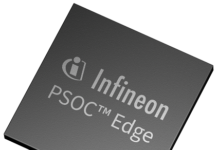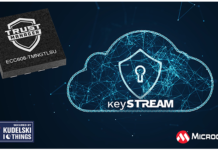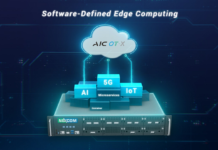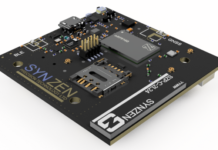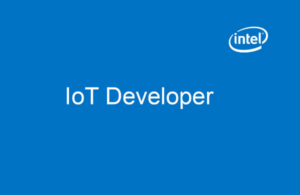
An important consideration when developing on the Intel IoT Platform is deciding on what communication technology (or multiple technologies) makes sense for your particular application. IoT supports many ways to transfer data, and Bluetooth LE, or Wi-Fi (to name a few) may not be the right fit for every device. The goal of this article is to make your selection easier by exploring the advantages and practical application examples for each technology.
Connecting to the Intel IoT Platform
All of the communication protocols referenced on this page are supported by the UPM project, Intel’s open source sensor & connectivity framework. If you’d like to take a deep dive into any of the individual APIs, the Wireless Communication section of the repository is a good place to start.
Long-Term Evolution* (LTE*) is a high speed standard used in wireless communication that is widely deployed on mobile phones.
- Strengths: Fast data transfer, with peak download rates up to 299.6Mbit’s. Has a high adoption rate.
- Limitations: Not optimized for low power consumption. Is a complex system, with higher costs in implementation and maintenance.
- Well Suited For: Larger markets include Smart City, and Industrial Automation. Other uses include automated vehicles, and fleet management.
BACnet*
BACnet* is a communication protocol developed by the American Society of Heating, Refrigerating, and Air-Conditioning Engineers (ASHRAE) for use in heating and cooling appliances. The standard operates over other communication standards such as ARCNET, Ethernet, ZigBee* and LonTalk*.
- Strengths: Specifically tailored to the needs of heating and cooling devices.
- Limitations: Not built for anything out of the heating and cooling space.
- Well Suited For: Larger markets include Smart City, Building Management Systems, and Smart Home. Other uses include HVAC, lighting control, access control, and fire detection systems.
- Example: The E50H5 BACnet MS/TP DIN Rail Meter is used in Smart Buildings to monitor power, and tracks usage of gas, water, steam, or other energy forms.
Bluetooth® LE
Bluetooth® Low Energy is a wireless technology for creating personal area networks. This is an offshoot of Bluetooth® technology designed to run in low power situation.
- Strengths: Well suited for small devices with low power resources. A low cost technology that is compatible with a large installed base of devices. The small physical size also is useful for building small devices, such as wearables.
- Limitations: Range limited to 100m, and maximum throughput is 2.1 Mbits/s.
- Well Suited For: Larger markets include Smart Home, Visual Retail and Building Management Systems. In addition, can be found in fleet management and telematics, health care, sports and fitness, and human interface devices.
- Example: In this code sample, Bluetooth LE is used with a TI SensorTag CC2650 to monitor the enviornment, such as in a Smart Home.
GPRS*
General Packed Radio Service* (GPRS*) is a mobile communication standard that uses GSM (global system for mobile communications) on 2G and 3G networks. It is different from other mobile technologies in that it’s a best-effort service that guarantees a minimum quality of service to the communication.
- Strengths: A good candidate for “always on” connections. An older standard that can connect to legacy devices, and networks that have wide been widely adopted.
- Limitations: Only supports low speed mobile communications.
- Well Suited For: Larger markets include Smart City, Visual Retail and Industrial Automation. In addition it is also used in transportation, and fleet management.
- Example: The Grove GPRS Module, V2 is detailed here, and is used to connect a variety of sensors in Visual Retail situations, .
GPS
GPS, or Global Positioning System, is a global navigation network based on a network of satellites. Devices with GPS receivers are able to pinpoint their precise coordinates.
- Strengths: Freely available, and implemented on military hardware. Available almost everywhere.
- Limitations: A one way communication method that only receives data. Used only for reporting location data.
- Well Suited For: Larger markets include Industrial Automation. In addition, can be used in transportation based devices, fleet management, and automated vehicles.
- Example: The UBLOX LEA-6H based GPS shield from DFRobot is used to connect to a variatey of sensors in Industrial Automation.
LoRaWAN*
A long range, low power platform. Data is encrypted, and available to regional, national, or global networks. This technology is intended for battery powered devices.
- Strengths: Long range communication range of up to 2-5 kilometers in dense urban areas. Low power consumption.
- Limitations: Lower data speeds over 3G networks.
- Well Suited For: Larger markets include Smart City, and Industrial Automation. Also used in fleet management and wearable devices.
- Example: The SX1276 LoRa/FSK Modem is used to connect to a variety of sensors in a Smart City environment.
Modbus
Modbus is a protocol designed to communicate over serial com ports It is a tried and true technology, having being developed in 1979 for working with programmable logic controllers (PLCs). Since then, the technology has been extensively used in industrial applications.
- Strengths: Solid, time proven communication method. Compatible with older devices, and may be used to connect to legacy technology already in place. This is also an open protocol, and can be implemented without cost.
- Limitations: Restricted to a single, non-wireless transmission method.
- Well Suited For: Larger markets include Smart Home, Visual Retail and Building Management Systems.
- Example: The T3311 Temperature and Humidity transmitter is being deployed for Smart Building to monitor temperatures in building HVAC automation, warehouse, and for archival storage in museums.
NFC/RFID
Near field communications (NFC) is a subset of RFID technology that allows for wireless communication between very short distances of about 1.6 inches. This is generally used for transferring data from embedded chips in plastic cards, such as credit cards.
- Strengths: Chips that contain data need no power. Low cost to implement.
- Limitations: Restricted to transferring small amounts of data at close range.
- Well Suited For: Larger markets include Smart Home, Visual Retail and Building Management Systems. Additionally, it has been used in card authentication, commerce, and bootstrapping other communications methods.
- Example: The Sparkfun RFID Evaluation shield is used to in Visual Retail to read RFID chips.
SigFox*
A low power, wide area network designed to operate on the Industrial, Scientific, and Medical ISM radio band. This is a closed standard
- Strengths: Low cost, and low energy. Compatible with Bluetooth, GPS, 2G/3G/4G, and Wi-Fi.
- Limitations: Proprietary solution offered by SigFox*.
- Well Suited For: Larger markets include Smart City, and Industrial Automation. Also found in fleet management, retail, agriculture, and Health & assisted living, and home automation.
Wi-Fi
Wi-Fi is a wireless standard that most people will be familiar with for establishing local area networks. Wi-Fi networks are standard for both home and office applications.
- Strengths: Widely adopted and ubiquitous. Long range when compared with other technologies. Good data throughput rates.
- Limitations: Power consumption is high, and physically size is large.
- Well Suited For: Larger markets include Smart Home, Visual Retail and Building Management Systems. In general, useful for larger boards and gateways that have access to robust power resources. In addition, found in intelligent vending machines, smart homes, Fleet Management and Telematics.
- Example: Wi-Fi is used to monitor the environment for Smart Home or Buildings in the How to Build an Environment Monitor Solution reference implementation.
Z-Wave*
Z-Wave* is a wireless technology developed for use in home automation. It is designed for reliability, and low latency.
- Strengths: Specialized for use in home automation, and can be considered a drop in solution for home IoT devices.
- Limitations: About 30 meter range. A low data rate system.
- Well Suited For: Larger markets include Smart Home, Visual Retail and Building Management Systems. Additionally, its found in lighting, HVAC, security, and home cinema applications.
- Examples: The Trane TZEMT400 Z-Wave Thermostat is used in Smart Home applications to monitor temps, and for remote management.
ZigBee*
ZigBee* is a wireless technology for deploying personal area networks that has been designed to be small, low power, and inexpensive. As a simple system, it’s suitable for a wider range of less complex devices, such as light switches.
- Strengths: Low latency and power consumption make it ideal for battery powered devices, which can run for years. It’s simple topology allows it to be integrated with other simple devices.
- Limitations: Range is limited to 10-100 meters and is line of sight. Low data rates.
- Well Suited For: Larger markets include Smart Home, Visual Retail and Building Management Systems. In addition, it’s found in home entertainment, industrial control, medical data collection, and Smoke/Intruder warnings applications.
- Example: The Z311X, Netvox ZB11D* and more are used to build a smart conference room in this Intel case study.
Source: digit.in




